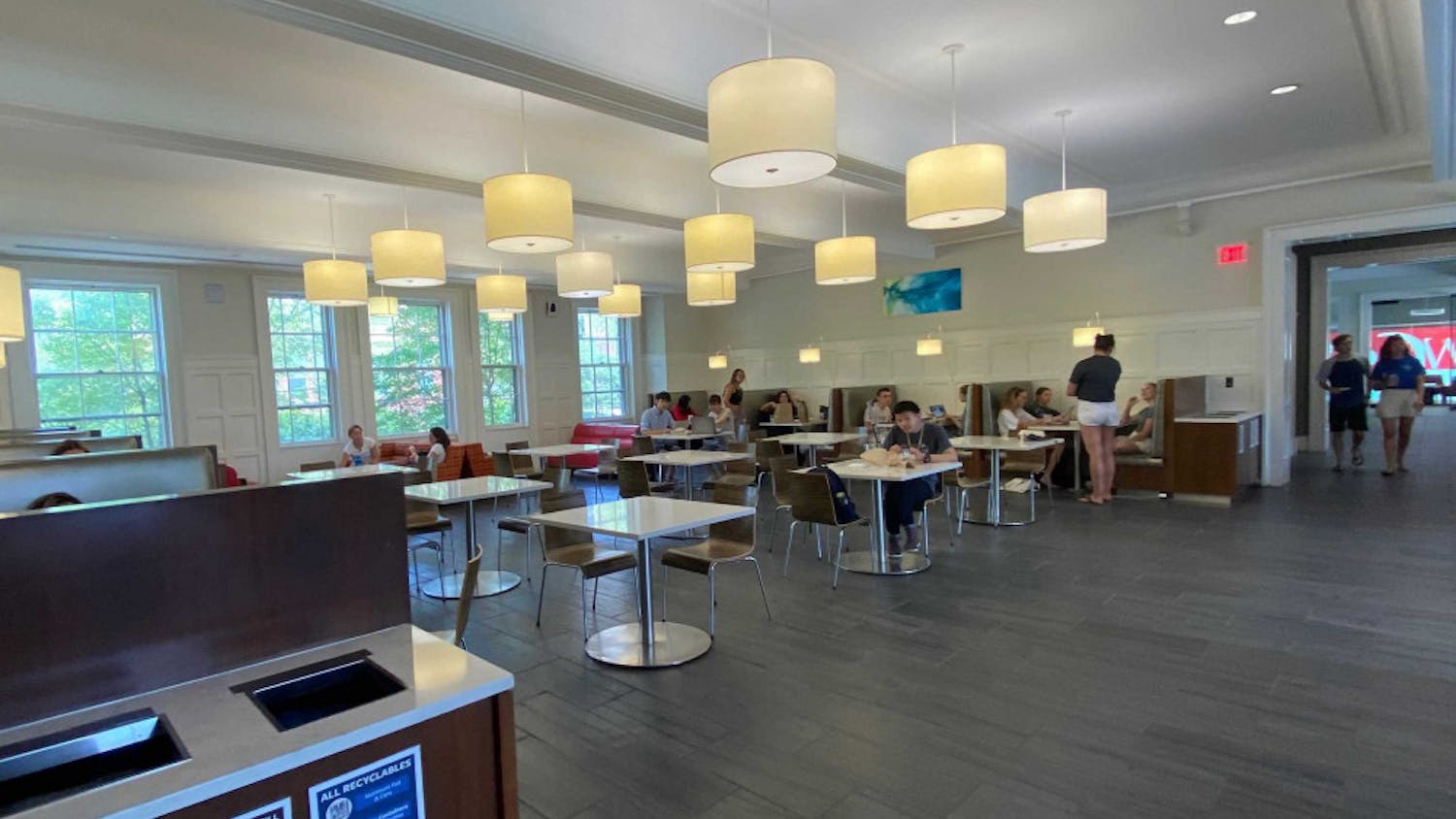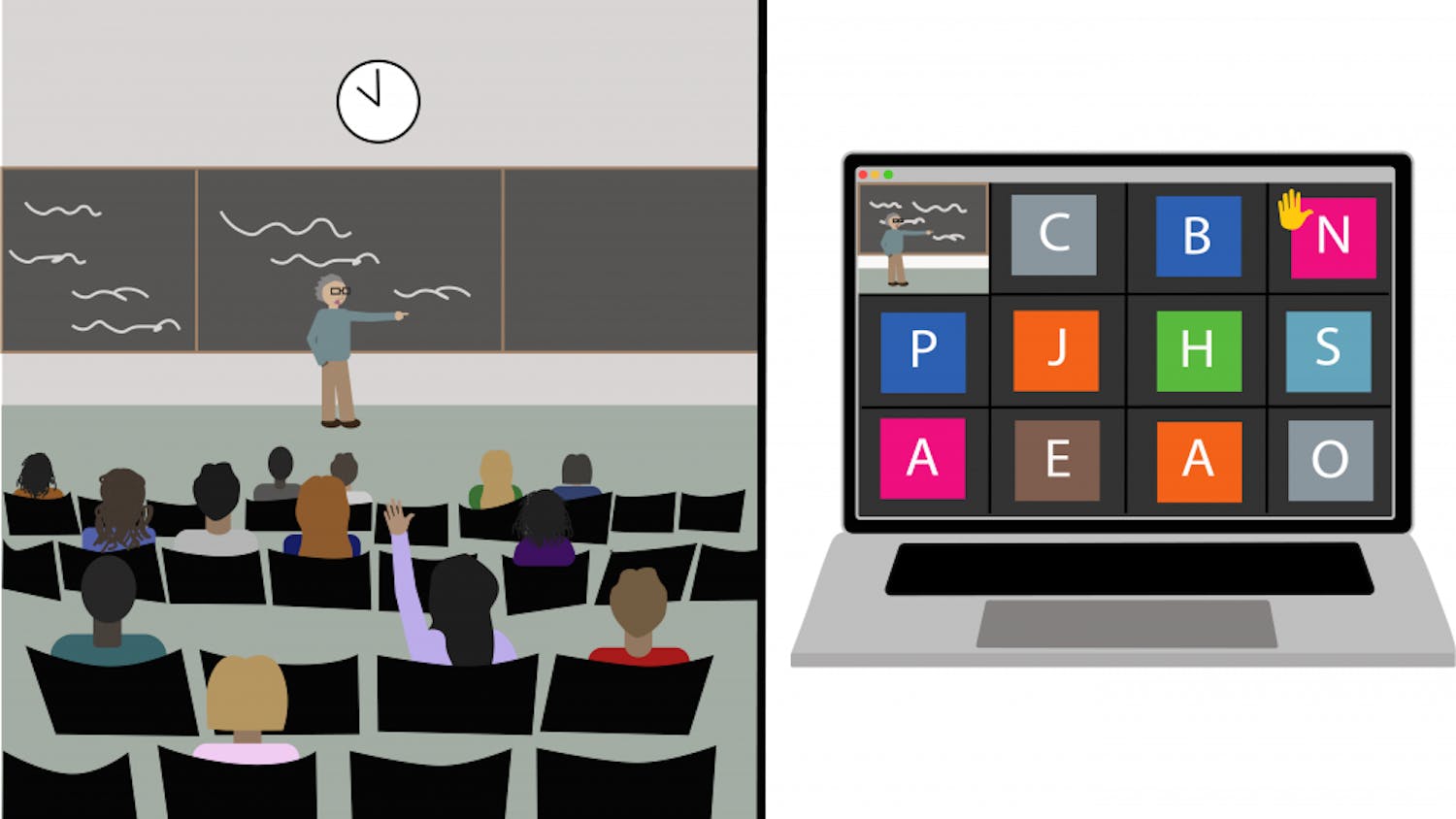Classmates, parents, faculty, and guests- I invite you all to imagine, momentarily, that we are sitting not in Providence, Rhode Island, but in Plano, Illinois. We see around us a rich forest, and in front of us a house. This house sits slightly elevated from the ground by a white frame, with all exterior walls made of glass. As we enter this house, we find ourselves within this glass structure. We sit amidst an open, fluid floor plan, with few divisions between rooms. We are simultaneously engulfed in our surroundings, and separated from them. We can see the lush leaves on the trees, and the varying shades of grass on the lawn, but we are immersed inside a quiet space, a reflective atmosphere slightly apart from that outside world.
The scene we have just entered is, in fact, a real location. It is the Farnsworth House, designed by the modern architect Ludwig Mies van der Rohe. As we return to our present location in Providence, I will invite you all to see the similarities between the Farnsworth House and our time here on College Hill. Reflecting on my Brown experience this fall, I searched for some way to aptly describe the most formative four years of my life. As a political science concentrator and a member of the field hockey team, the last place I expected to find the answer to such a crucial question was in my introductory art history class, entitled "Modern Architecture."
And yet my epiphany came as I viewed and learned about The Farnsworth House. When he built the house, Ludwig Mies van der Rohe, disregarded the hopes, plans, and even direct orders of his patron, Dr. Edith Farnsworth. I began to realize that I entered Brown as this reluctant patron: I expected and even hoped for a more traditional, straightforward college experience. I wanted to build relationships, put myself in a new setting, and learn...something. Instead, I met Brown- my own Farnsworth House.
As community members of all types at Brown, we sit inside a structure much like the Farnsworth House. To start, the Open Curriculum is structured quite similarly to the interior of the house. At first it is unsettling- there are few divisions within our studies, and I for one was terrified of the academic license Brown granted me. Yet when I was left to design my own semester, a thematic plan emerged without fail. I am sure this is no mere coincidence. Just as Mies van der Rohe left his patron to navigate the interior of the Farnsworth House according to their preferences, so Brown has allowed us to create a unique plan of study. By granting me license over my educational choices, Brown gave me an open, fluid floor plan with which to work. From this I began to inherently look at the bigger picture, in my own choices and in my surroundings.
Furthermore, Brown offered me a dynamic relationship with these surroundings. The glass walls of the Farnsworth House both slightly detach its residents from the surrounding environment, and insulate them temporarily. They provide space for introspection and reflection, and make inhabitants constantly aware that there IS something outside the walls. So it was for me as a student at Brown. College Hill offered me a safe space in which to reflect, and yet it constantly pushed me to think one step further. I was granted the time and support to discover what was truly important to me, and to ask why it was so. Then I was pushed to integrate these discoveries, what I call "inside the glass" thoughts, into the broader context of the world around me; the world outside the glass. This world was both temporarily suspended and omnipresent.
This structure of my education not only broadened my perspectives, but also forced me to apply them to what I still saw outside my home. My education at Brown has thus been a call to action: a call to ask not simply why phenomena occur, but also how we can use this knowledge. I saw theory translated into action everyday at Brown. I began to learn about political science amidst a sea of classmates already shaping the political process and challenging me to understand my political views as they related to real situations in Providence. Just as the Farnsworth House gives its resident a space of reflection that is constantly aware of its surroundings, Brown fosters an educational and creative space that always links concepts back to our world. When we can see the ways our experiences on College Hill can be applied in our lives and in the lives of others before we ever leave, we are compelled, and prepared, to make our unique mark in any setting we inhabit.
Now, I see us as a class, stepping outside of our Farnsworth House, and re-immersing ourselves in the beautiful and complicated forests that surround it. I am caught between the interior and the exterior. This metaphor allows me to appreciate the formative space from which I am emerging, while standing ready to introduce my new self to my surroundings. I know that I have a unique perspective created at Brown, in which I can see problems, find solutions, and apply those solutions as part of one comprehensive process- I can integrate my knowledge formed inside this house with its applications outside the glass frame.
I thus invite us all to think about what this moment of "stepping outside the house" can be. It can be not only about stepping through the Van Wickle Gates, but through the door of our home and into our world. It can be a moment of appreciation for the space Brown has given us, the plan that has subtly guided us, as well as the development we have experienced here. But it can also be a moment of eager arrival, of emergence into the surroundings that we have admired and studied.
Ludwig Mies van der Rohe himself said, "Architecture starts when you carefully put two bricks together. There it begins." As I stand in front of all my classmates and all the people that have played a part in our time here at Brown, I know that this moment of emergence can and will be a time of transition. We have each been shaped by the architecture of Brown, by individuals in our lives, and by each other. Now, we may become architects of our own actions outside this space, architects of new adventures that await us, and architects of the myriad ways we will experience and influence our new settings outside Brown. Let us now begin to carefully put two bricks together.




